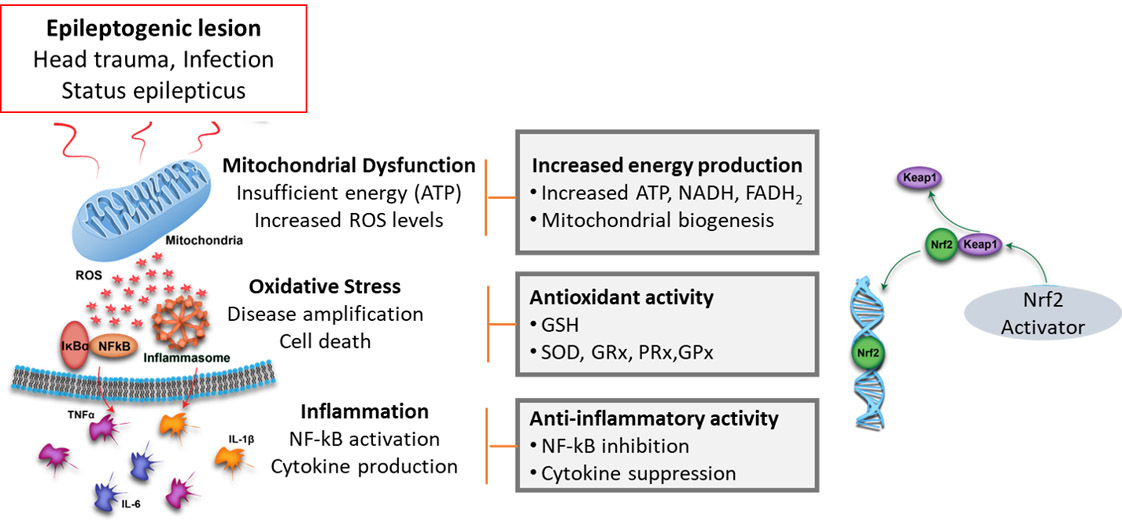In approximately 40% of all epilepsy cases, the etiology is known, including brain insults such TBI, ischemic stroke, tumors, several neurodegenerative diseases, and prolonged acute symptomatic seizures such as status epilepticus (SE). Thus, epilepsy is one of the only brain diseases in which people at risk can be identified, but there is no prophylactic treatment to prevent the development of epilepsy in those at risk. Currently available antiepileptic therapies target only symptoms of the disease, and fail to adequately prevent seizure development, or permanently halt the occurrence of seizures. Furthermore, about one-third of patients with epilepsy are resistant to the available antiepileptic drugs.
At my lab at the School of Pharmacy in the Hebrew University, we investigate the processes and sources that contribute to the generation of free radicals and reactive oxygen species that lead to oxidative stress, and its relation with pathophysiological functions in CNS disorders, mainly in epileptogenesis (the process by which brain injury leads to chronic epilepsy) and established epilepsy.
We aim to develop antioxidant therapies centered around the multiple neuroprotective effects of the nuclear factor erythroid 2-related factor 2 (Nrf2), described as the "master regulator" of the anti-oxidant response.
In addition, we study novel gene therapy approaches that will be implemented in different rodent models, target genes and genetic approaches, to develop antioxidant gene therapy for targeting oxidative stress in CNS diseases.
Gene therapy holds genuine clinical promise for the treatment of a wide variety of disorders, including epilepsy and other CNS diseases. Gene therapy refers to a set of techniques that introduce, overexpress, knock down or edit particular genes for therapeutic purposes. Viral vectors are engineered to encode the therapeutic genes or gene-editing constructs under the control of promoter elements that target their expression to specific cell types. As such, gene therapy theoretically provides what traditional pharmacotherapy cannot: a long-lasting intervention delivered to a predetermined population of target cells.
The main advantage of our proposed approach is that it opens the possibility to modify only affected neurons/cells, and spares healthy cells in surrounding tissue. This opens a possibility for treatments in regions of the brain that are essential for function (e.g. eloquent cortex) which cannot be surgically removed, and surmounts the issue of developing cell specificity of the treatments.
The multiple neuroprotective Effects of Nrf2

Research Interests
- Study the multiple neuroprotective effects of Keap1/Nrf2 pathway
- Targeted drug delivery for CNS
- AAV-based gene therapy for CNS diseases
- Study the pharmacokinetics and pharmacodynamics of novel CNS active drugs

